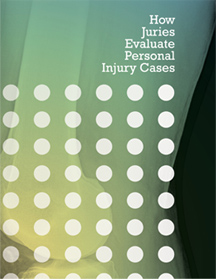Common abbreviations and symbols in medical records
It is virtually impossible for a personal injury attorney to handle personal injury cases effectively if he or she does not know how to analyze and understand a client’s medical records. Insurance companies and defense law firms have trained personnel, including nurses, who know how to read and decipher medical reports, hospital records, and laboratory results. If a plaintiff’s lawyer tries to negotiate a personal injury settlement without understanding the exact nature of his or her client’s injuries, they may settle the case for a fraction of its value.
Personal injury lawyers must know the most important medical terms and abbreviations. The following abbreviations and code symbols are frequently used in medical reports, hospital records, nurses’ notes, and other medical documents. An experienced personal injury lawyer knows it is imperative to understand the meaning of these abbreviations and symbols because they refer to actual conditions of their clients.
For example, a reference to “ETOH” may mean that the patient had consumed alcohol and may have been under the influence of intoxicating beverages. Such a reference could be extremely important in a personal injury case. Failure to recognize a reference to alcohol consumption could make a difference in the value of the settlement and would also be fatal if an attorney learned it for the first time at trial.
Many medical reports indicate that injuries are “secondary to MVA.” Such a reference indicates the doctor’s impression that the injuries were caused by the automobile collision, addressing the major question of causation. If such a reference is indicated in the hospital record, it may be possible to prove your case, if it is a small one, by admission of the certified hospital record. Such evidence avoids the need for expensive testimony from a physician.
Another abbreviation is “DNKA.” This symbol is often noted in physical therapy reports and can be fatal to the settlement of your case. It means that the patient did not keep the appointment and such a reference is often used by defense attorneys at trial indicating that the plaintiff failed to mitigate damages by not keeping appointments with either the doctor or the physical therapist.
The list below contains some of the most frequently used abbreviations in medical records:
| abd | abdomen or abdominal |
| ad lib | as much as needed or desired |
| ADL | activities of daily living |
| adm | admission |
| AK | above the knee |
| AMA | against medical advice |
| amb | ambulate |
| a/o | alert and orientated |
| ARDS | adult respiratory distress syndrome |
| AROM | artificial rupture of the membranes |
| ASA | aspirin |
| BCP | birth control pills |
| BE | barium enema |
| bid, b.i.d. | two times a day |
| BK | below the knee |
| BM | black male or bowel movement |
| BP | blood pressure |
| BR | bed rest or bathroom |
| c | with [used frequently] |
| CAT | Computerized Axial Tomography |
| C&S | Culture and sensitivities |
| CBC | complete blood count |
| CC or cc | chief complaint [used frequently] |
| CICU | coronary intensive care unit |
| CNS | central nervous system |
| c/o | complain of [used frequently] |
| cpd fx | compound fracture [more serious than a normal fracture] |
| CPR | cardiopulmonary resuscitation |
| c-spine | cervical spine |
| CT | CAT scan |
| CXR | chest X-ray |
| d/c | discontinue |
| D/C, DC | discharge |
| DNKA | did not keep appointment [very important] |
| DTR | deep tendon reflexes |
| dx | diagnosis |
| EBL | estimated blood loss |
| ECG | electrocardiogram |
| EDC | estimated date of confinement |
| EEG | electroencephalogram |
| EKG | electrocardiogram |
| EMS | emergency medical service |
| EOA | oral airway |
| Epi | epidural |
| ER | emergency room |
| ETOH | ethyl alcohol [important—indicates alcohol consumption] |
| Fe | iron |
| Fem | femoral |
| FH | family history |
| FHR | fetal heart rate |
| FHT | fetal heart tone |
| FHM | fetal heart monitor |
| FHx | family history |
| FOB | foot of bed |
| Lu., F/U | follow up |
| Fx | fracture |
| Fx dis | fracture dislocation/dislocated |
| GP | general practitioner |
| GSW | gunshot wound |
| GYN | gynecology |
| H&P | history and physical |
| HA, H/A | headache |
| HBP | high blood pressure |
| HEENT | head, ears, eyes, nose, throat |
| HOB | head of bed |
| HPI | history of present illness |
| hr | hour |
| HR | heart rate |
| Hx | history |
| I&D | incision and drainage |
| ICCU | intensive coronary-care unit [illustrates concern about heart problems] |
| IM | intramuscular |
| IUD | intrauterine device |
| IV | intravenous |
| KLS | kidney, liver, spleen [any injury to these organs is significant] |
| L | left |
| L | lumbar |
| Lab | laboratory |
| LE’s | lower extremities |
| LMP | last menstrual period |
| LOC | level of consciousness or loss of consciousness [very important] |
| M | murmur |
| M.E. | medical examiner |
| MAE | moving all extremities |
| MCL | midclavicular line |
| med(s) | medications |
| MICU | medical intensive care unit, or mobile intensive care unit |
| MVA | motor vehicle accident [used frequently] |
| N.A.D. | no acute distress |
| NEU, Neu | neurological |
| NKA | no known allergies |
| nl | normal limits |
| NS | neurosurgery |
| N/V, N&V | nausea and vomiting |
| N/V/D | nausea, vomiting, diarrhea |
| O.D. | right eye |
| O.S. | left eye |
| O.U. | both eyes |
| OA | osteoarthritis |
| OB | obstetrics |
| Occ | occasional |
| OD | overdose |
| OR | operating room |
| ORIF | open reduction & internal fixation |
| Ortho | orthopedic |
| OT, O/T | occupational therapy |
| PE | physical examination |
| PG | pregnant |
| PH | past history |
| PI | present illness |
| PMH | prior medical history |
| po | by mouth |
| P.O. | phone order |
| post-op | post operative pre-op pre-operative |
| PRN | as required or as needed [used frequently] |
| pt | patient |
| PT | physical therapy |
| PTA | prior to admission |
| PX | prognosis |
| q.a.m. | every morning |
| q.d. | every day |
| q.h. | every hour q.i.d. or QID 4 times a day |
| R | right |
| RN | registered nurse |
| R/O | rule out |
| ROM | range of motion or rupture of membranes |
| RR | recovery room |
| s | without |
| SLR | straight leg raising |
| S/P | status post |
| STAT | immediately |
| STD | sexually transmitted disease |
| surg | surgery |
| SX, Sx | symptoms |
| tic, t.i.d. | 3 times a day |
| TMJ | temporomandibular joint |
| TPR | temperature, pulse & respiration |
| TX, Tx | treatment |
| Ua | urinalysis |
| UCHD | usual childhood diseases |
| U.E.’s | upper extremities |
| V.O. | verbal order |
| W | white |
| W/, w/ | with |
| WNL, wnl | within normal limits |
| x | times |
| ↑ | increase |
| ↓ | decrease |
| > | greater than |
| < | less than |



